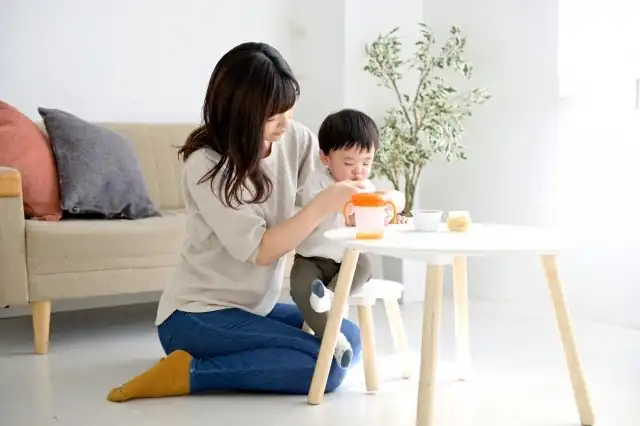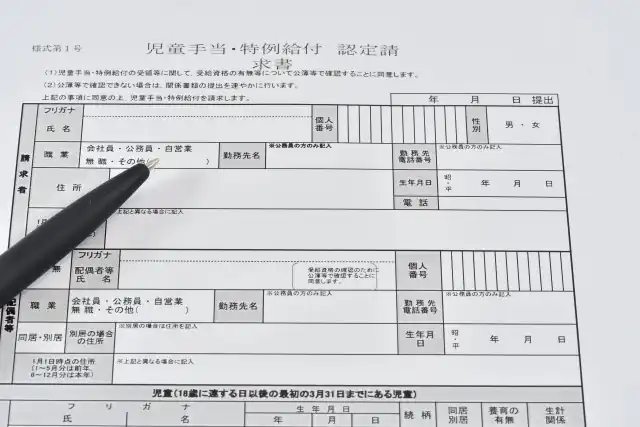Moving can be challenging for adults, but it becomes even more difficult when children are involved. They may interfere during packing, and you will also have to handle additional procedures, which can be overwhelming. Not to mention, you’ll also have to help your child navigate the change in the environment.
In this article, we will introduce the recommended moving time and procedures when moving with children, tips and tricks for packing, and ways to support your child. If you’re considering moving with children but are unsure of the right timing or how to prepare, please use this as a reference.
At Village House, we offer over 1,000 affordable rental properties across Japan, with prices starting from as low as 20,000 yen per month. If you’re searching for a new home, be sure to check out our website.
When is the best time to move for families with children?

The best time to move varies depending on the child’s environment and circumstances. Factors such as whether your child attends daycare or kindergarten, and their personality can also influence the recommended timing.
- During pregnancy
While pregnancy can place a physical strain on the body, it is also a time when you may find it relatively easier to move house. However, you need to be careful during the first three months of pregnancy, as morning sickness can be severe and there is a high risk of miscarriage. On the other hand, if you push yourself too hard in the later stages of pregnancy, especially from the eighth month onward, there is a concern that your water may break, or you may give birth prematurely.
If you are planning to move during pregnancy, the ideal time is during the second trimester, around the fifth or sixth month, when your condition is generally more stable. Additionally, if moving requires you to change your obstetrician, be sure to obtain a referral letter from your current doctor.
- Age 0-2
Moving with children aged 0 to 2 can be quite challenging. Ideally, it is best to plan the move when your baby is around 4 to 6 months old, before they begin standing or walking. Once your child turns one and becomes more active, consider using temporary childcare services or hiring a babysitter to ease the process. Don’t forget to check the availability and confirm any necessary arrangements for transferring to a new daycare in advance. When searching for a new home, it is advisable to choose a property with good soundproofing to prevent potential issues with neighbors.
- Ages 3-6
Properly timing your move before your child starts kindergarten or during the transition from daycare to kindergarten can help minimize stress for your child. In urban areas where elementary school entrance exams are common, it may be ideal to move to a more convenient location around the age of three or move after the school your child will be attending has been decided. Even for public schools, it’s advisable to research the reputation of schools in the area beforehand to ensure a smooth relocation.
- Elementary and middle school students
After starting elementary school, children may resist transferring to schools due to factors such as relationships with friends and academic progress. If a move is unavoidable, the best timing would be after graduating from elementary school. For sixth-grade elementary or third-grade middle school students, attending a school across district lines may be allowed in some cases. That said, if a new environment is likely to benefit your child’s growth and development, transferring schools might have a positive impact.
List of procedures during a move for families with children

- Procedures for transferring daycare, kindergarten, and/or schools
The required documents and deadlines for transferring to a new daycare, kindergarten, and/or school vary depending on the institution. Make sure to check these details in advance. When transferring from an elementary or a middle school, inform the current school about the transfer.
- Changing the address for child allowance (jido teate)
If you are moving within the same city or municipality, submit a change of address form for the child allowance. If you are relocating to a different city or municipality, follow the steps below:
- Submit the “Child Allowance Eligibility Termination Notice” at your current city or municipality office and request an “Income Tax Certificate.”
- At the new municipality office, gather the required documents and submit the “Child Allowance Application Form” within 15 days.
- Changing the address on the Child Medical Care Certificate
Similar to child allowance procedures, if you are moving within the same city or municipality, submit a change of address form. If you are relocating to a different city or municipality, follow the steps below:
- At your current city or municipality office, bring your “Child Medical Care Certificate” and “Seal” (Hanko), and return the certificate at the counter.
- At your new municipality office, gather the required documents and complete the necessary procedures.
Please note that the Children’s Medical Expense Subsidy may differ by municipality. It is advisable to check with the new city hall to verify whether you are eligible for the program.
Tips and tricks for packing when you have a child around

If you have relatives or mom friends nearby that you can rely on, having them look after your child will help you pack more efficiently. However, it’s important not to take advantage of their help too much. Remember to also offer your assistance when they need it and express your gratitude sincerely.
On the other hand, if you don’t have anyone to rely on, it’s recommended to pack while your child is napping during the day, or after they have gone to bed at night. Let your child play at the park during the day and put them to bed earlier in the night to make sure you have time to pack.
If you’re unable to find time for packing, consider leaving it to a moving company. Many companies have plans that include the entire process of packing, loading, unloading, and unpacking.
The plan names and contents vary depending on the company, but they can handle most of the work related to the move. Though such services will cost more, they can save you a significant amount of time and effort. Such plans are especially recommended for families who can’t leave their children unattended, or for busy individuals juggling household chores, childcare, and work.
For more details regarding packing for a move, please refer to the article below:
Greet your neighbors after moving in

Many people who live alone tend to think that it is not necessary to greet their neighbors after moving in. In recent years, with increased awareness of privacy protection and security concerns, more people are becoming reluctant to engage with others unnecessarily.
Even so, for families with children, it is still recommended to greet your neighbors after moving in. In a shared apartment building, noise from children can potentially lead to disputes.
To prevent potential issues, it is advisable to greet your neighbors immediately after moving in while bringing a small gift. Let them know that you have children with you and apologize in advance for any inconvenience.
Should we give a gift to our child’s friends before moving?

It seems to be customary to give presents to friends when leaving for a new kindergarten or school. However, some kindergartens and schools may prohibit gift-giving, so it’s best to check with the homeroom teacher in advance.
The suggested budget for each gift is around 100 to 300 yen per person. Consumable items such as hand towels and pencils are recommended. It is best to avoid food items, as you will need to take into consideration allergies and personal preferences.
Supporting a child during and after a move

One thing that tends to fall under the radar is the mental care of children during and after a move. Babies may cry at night due to the changes in their environment. In addition, for children of elementary school age and older, parting with close friends can be emotionally traumatic. In the past, there was a tragic case of an elementary school boy who left home after moving, saying “I want to go back to the old house,” and got into an accident.
The impact of moving on children varies depending on their age. It is important for parents to be sympathetic towards their children by listening to them, which can help alleviate their anxiety. Moreover, spending some quality time together before and after the move can help children embrace the new environment with a positive attitude.
At Village House, we offer a wide selection of properties for families with children all across Japan. In addition, there are no security deposit, key money, renewal fees, or handling fees (※), allowing you to save on initial costs! If you are looking for a new home to move to, feel free to contact us!
※A security deposit may be required depending on the contract details and screening results.
Related articles:
- Designing the Perfect Room for Children
- Suitable Apartment Layouts for a Family of Three – Find Out Which Is Best for You!
- Life After Divorce: Moving Out and Moving On
- I Can’t Finish Packing! What Should I Do?

Hello, I’m Machiko Doi, a freelance writer who writes about housing and living in Japan.
I live in an 80-year-old house that I inherited from my grandparents along with my two shelter cats and daughter.
We live a relaxed life while repairing the house.
I like to cook vegetables from the garden and fresh fish caught by my father, and enjoy them with cold beer on a hot day or hot sake on a cold day.



